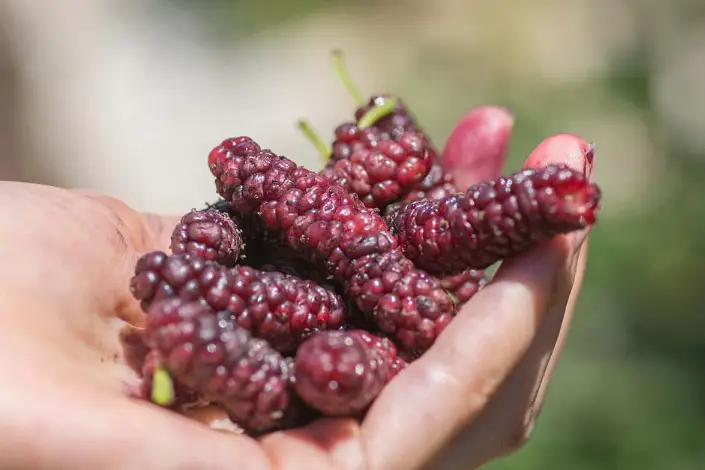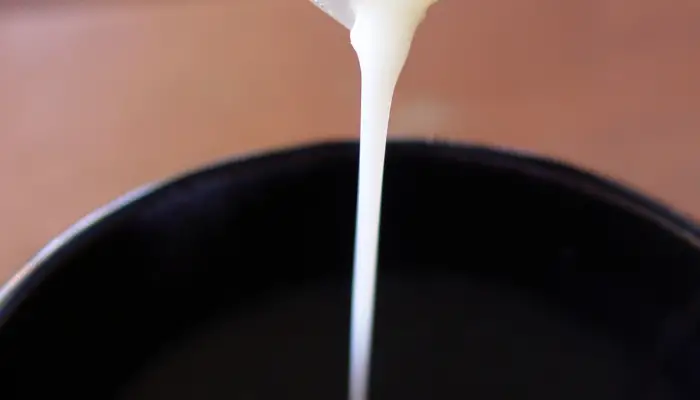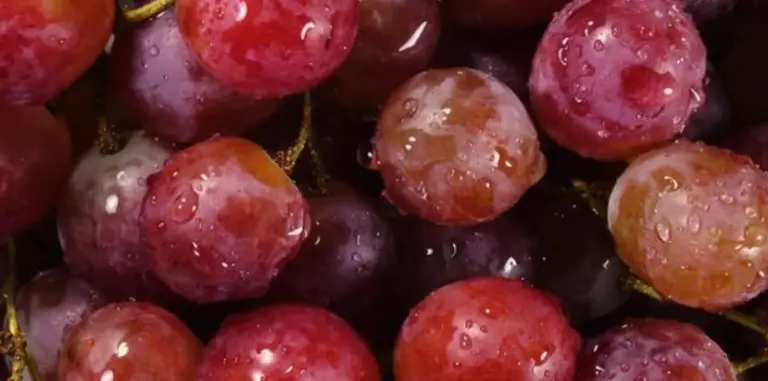Mulberry Varieties Unveiled: Red vs. White vs. Black Mulberries
Red mulberries (Morus rubra) and white mulberries (Morus alba). These two species share a common genus but exhibit distinct characteristics. Whether you’re a nature enthusiast, a gardener, or simply curious, understanding the differences between these mulberries can enhance your appreciation for these remarkable trees.
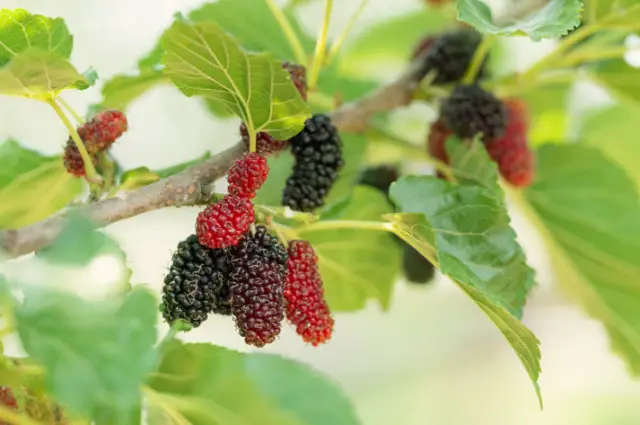
Red Mulberry (Morus rubra)
Identification:
- Leaves: Red mulberry leaves are longer (4–7 inches or 10–18 cm) and always taper to a conspicuous, long point at their tip. Sidelobes, when present, are also acuminate.
- Leaf Underside: Leaves are pubescent underneath, with pubescence covering all veins, even smaller side veins.
- Fruit: Red mulberry fruits are larger (usually 2-3 cm long) and are often borne singly in leaf axils. When clusters exist, they are smaller.
- Bark: The bark is grey with a more scaly texture and straight ridges.
Additional Notes:
- Red mulberries occur in mature bottomland forests and are threatened by hybridization with the introduced white mulberry.
- The color of ripe fruit varies considerably from tree to tree, ranging from white to deep purplish-black.
White Mulberry (Morus alba)
Identification:
- Leaves: White mulberry leaves are shorter (3–4 inches or 8–10 cm) and only sometimes taper to a long point at their tip; some leaves may look blunt-tipped.
- Leaf Underside: Leaves are minimally pubescent underneath, with sparse hairs on major veins.
- Fruit: White mulberry fruits are shorter (usually at most 2 cm long) and often borne in clusters, with more berries per cluster.
- Bark: The bark has a slightly warmer color (tan or brownish) and looks almost braided, with ridges that twist back and forth.
Additional Notes:
- White mulberries are native to northern China but have been introduced in North America, where they are widely considered invasive and hybridize with native red mulberries.
- While white mulberries can be enjoyed whole, they are not as flavorful as their red counterparts.
What Are Some Recipes That Use Mulberries?

Mulberries, with their sweet and juicy flavor, can be used in a variety of delightful recipes. Whether you have fresh mulberries or dried ones, here are some delicious ways to enjoy them:
- Mulberry Jam:
- A simple but scrumptious jam made with mulberries, sugar, and lemon juice. Simmer them together until they thicken. Perfect for spreading on toast or scones.
- !Mulberry Jam
- Mulberry Pie:
- A rustic pie with a lattice top, featuring buttery, flaky pastry and a gooey fruit filling. A dessert to remember!
- !Mulberry Pie
- Mulberry Muffins:
- Moist muffins flavored with cinnamon, vanilla, and juicy mulberries. Perfect for breakfast or as a grab-and-go snack.
- !Mulberry Muffins
- Mulberry Hazelnut Oats with Molasses:
- An energy-packed breakfast bowl with fresh berries, crunchy toasted oats, hazelnuts, hemp seeds, and a touch of molasses.
- !Mulberry Hazelnut Oats
- Mulberry Crumb Bars:
- Crumbly, soft, and buttery bars with a juicy, gooey mulberry jam layer. Irresistible!
- !Mulberry Crumb Bars
- Vanilla Bean and Mulberry Cake:
- An elegant vanilla cake swirled with rich mulberry syrup. Top it with cream cheese frosting and more berries.
- !Mulberry Cake
- Mulberry Mojitos:
- Refreshing and sweet, this fruity mojito is a fun twist on the classic cocktail.
- !Mulberry Mojitos
How do I store fresh mulberries?
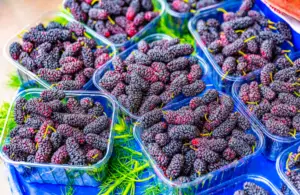
Mulberries, with their sweet and juicy flavor, are delightful fruits that deserve proper care to maintain their freshness. Whether you’ve just picked them from a tree or bought them at a market, here’s how to store fresh mulberries:
- Handle with care:
- Mulberries are delicate, so handle them gently to avoid bruising and damage.
- Place them in a shallow container to prevent crushing.
- Keep Them Unwashed:
- Store unwashed mulberries to prevent excess moisture and extend their shelf life.
- Washing the berries before storage can make them more prone to spoilage.
- Refrigerate:
- Place the unwashed mulberries in a storage container.
- Seal the container closed and store it in the refrigerator for up to three days.
- Wash the mulberries under cool water immediately before use or serving.
- Freezing Option (for longer storage):
- If you want to store mulberries for an extended period, consider freezing them.
- Wash and dry the mulberries thoroughly.
- Spread them out on a baking sheet in a single layer and freeze until solid.
- Transfer the frozen mulberries to an airtight, freezer-safe bag or container.
- Label and date the container, then store it in the freezer for up to several months.
How do you know if fresh mulberries have gone bad?
Fresh mulberries are delightful, but like any fruit, they can go bad over time. Here are some ways to determine if your mulberries have spoiled:
- Texture and Appearance:
- Inspect the texture: Fresh mulberries should have a fine and smooth texture. If they feel mushy, overly soft, or have wrinkles, they might be past their prime.
- Check for discoloration: Look for any off-color patches, mold, or unusual spots. Discolored or darkened areas may indicate spoilage.
- Smell:
- Use your sense of smell. Give the mulberries a gentle sniff. If they emit a foul or unpleasant odor, it’s a sign that they have gone bad.
- Moldy smell: Mold growth produces a distinct smell. If you detect it, discard the affected berries.
- Visual Signs of Spoilage:
- Mold: If you notice any fuzzy white or green mold, it’s time to toss the mulberries.
- Leaking juice: Mulberries that have split skins and are leaking juice are likely overripe or spoiled.
Remember that freshness is key when it comes to enjoying mulberries. If they pass the texture, appearance, and smell tests, you’re good to go! Otherwise, it’s best to discard any questionable berries.
Summary
In summary, red mulberries thrive in mature forests, while white mulberries often pioneer disturbed habitats. Their leaves, fruit, and bark provide intriguing contrasts, making them both captivating subjects for exploration.
Sources:
Frequently Asked Questions (FAQs) Related to Mulberries:
-
How do I update my contact information?
- You can update your contact information by logging into your Mulberry customer account.
-
How do I access my Mulberry customer account?
- To access your Mulberry customer account, visit the Mulberry website and sign in.
-
What happens if I return or exchange my product?
- If you return or exchange a product, check the specific terms of your Mulberry Protection Plan for details.
-
Can I cancel my Protection Plan?
- Yes, you can cancel your Mulberry Protection Plan. Refer to the plan details for cancellation instructions.
-
Where can I find specific details about the Mulberry Protection Plan I purchased?
- Visit the Mulberry website or contact their customer support for detailed information about your purchased Protection Plan.
-
Is there a limit to how many times I can file a claim?
- Check your Protection Plan documentation for any limitations on claim filings.
-
How do I delete attachments from messages in Mulberry?
- To delete attachments, navigate to the relevant message and remove the attachments.
-
What are the keyboard shortcuts in Mulberry?
- Mulberry offers various keyboard shortcuts for efficient navigation. Consult the Mulberry documentation for a list of shortcuts.
-
How do I move preferences between different machines in Mulberry?
- You can transfer preferences by exporting them from one machine and importing them on another.
-
What is the purpose of multiple alert styles in Mulberry?
- Mulberry allows you to customize alert styles for different types of notifications. Explore the options in the settings.
-
What’s the ‘we do not relay’ error I see when sending mail in Mulberry?
- The error indicates that the mail server does not allow relaying. Check your SMTP settings and authentication.
-
How do I make the message and draft windows remember their size and position in Mulberry?
- Adjust the window size and position, then save the layout preferences in Mulberry.

